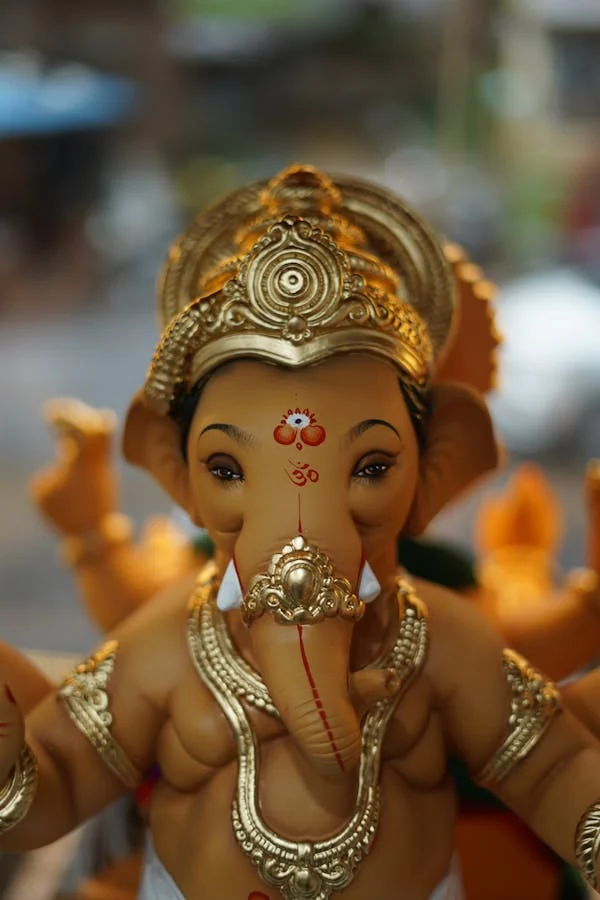Within Maharashtrian tradition, there is a word of endearment that captures great respect and love—”Bappam.” Though many people may not know this term, it is extremely important to millions of followers, especially around Ganesh Chaturthi. It is a statement of the strong emotional link between Lord Ganesha and his adherents, not only a name. Still, why does “Bappam” have such cultural weight and what exactly does it mean?
Recognizing “Bappam” in Marathi Culture
Understanding “Bappam” requires first seeing how closely it relates to Lord Ganesha, one of the most often adored gods in India. Famously referred to as “Bappa” among Marathi-speaking cultures, Lord Ganesha is known as the remover of obstacles and the god of wisdom and wealth. Emphasizing the love and respect devotedes have for Ganesha, particularly during the Ganesh Chaturthi celebration, the endearing name “Bappam” is even more intimate.
During Ganesh Chaturthi, one of the biggest and most observed celebrations in Maharashtra, the word “Bappa” (and thus, “Bappam”) is utilized in chants, prayers, and songs. People will be fervently yelling “Ganpati Bappa Morya!”—an exclamation that translates as “Hail Lord Ganesha!” This sentence captures the happiness and loyalty people experience during the celebration, and is central in all of it.
The Affection Explosion During Ganesh Chaturthi
Around Ganesh Chaturthi, the time of year when millions of families bring Lord Ganesha into their homes as gorgeous idols, offering prayers and devotional song chanting, the name “Bappam” becomes extremely important. This celebration of culture, community, and spiritual dedication beyond mere rites. It naturally expresses love and reverence for the deity as families set their idols and get ready for the days of worship.
People love it in informal talks, on social media, and even in community events—not only in temples or during prayers. People often call their Ganesha idols “Bappa” or “Bappam” since they enjoy happy and dedicated times with others.
A Term of Respect and Endearment
Apart from its religious relevance, it has more general cultural value. In some Marathi groups, the word is used more broadly to describe revered male leaders, especially those of elderly age. It expresses love and admiration for people considered as pillars of the family or society.
The spiritual meaning also reflects the way the Marathi people regard Lord Ganesha as a member of the family rather than only a god. Whether it’s the Ganesha statue installed in the house or the public celebrations in nearby places, the name “Bappam” pulls people closer together, therefore fostering a shared respect and group delight.
The Role of Bappam’s Culture in His Devotion
Beyond one celebration, the devotion to Ganesha is a deeply ingrained habit in areas including Mumbai, Pune, and other parts of Maharashtra. It is intertwined into the fabric of daily life, where Ganesha’s blessings—for success, wealth, and the clearing of challenges—are sought. Apart from a religious connotation, the name “Bappam” serves as a cultural marker, signifying a link of affection and custom that ties individuals to their background.
With great public processions, the construction of complex idols, and big festivities, the celebrations of Ganesh Utsav unite families, communities, and neighborhoods. These are the times when the name “Bappam” really shines, becoming a universal emblem of respect for Lord Ganesha, unity, and loyalty.
In conclusion, “Bappam” is a symbol of love, respect, and culture, not just Lord Ganesha. Maharashtrans, especially during Ganesh Chaturthi, see “Bappam” as a personal link to their god. It emphasizes community, tradition, and spirituality via a bond of love and devotion that transcends religious rites and seeps into daily life.
When you hear “Bappam” in conversation or celebrate Ganesh Chaturthi, it reminds you of the cultural and spiritual bonds that unite millions of people in devotion to Lord Ganesha, their Bappa.

